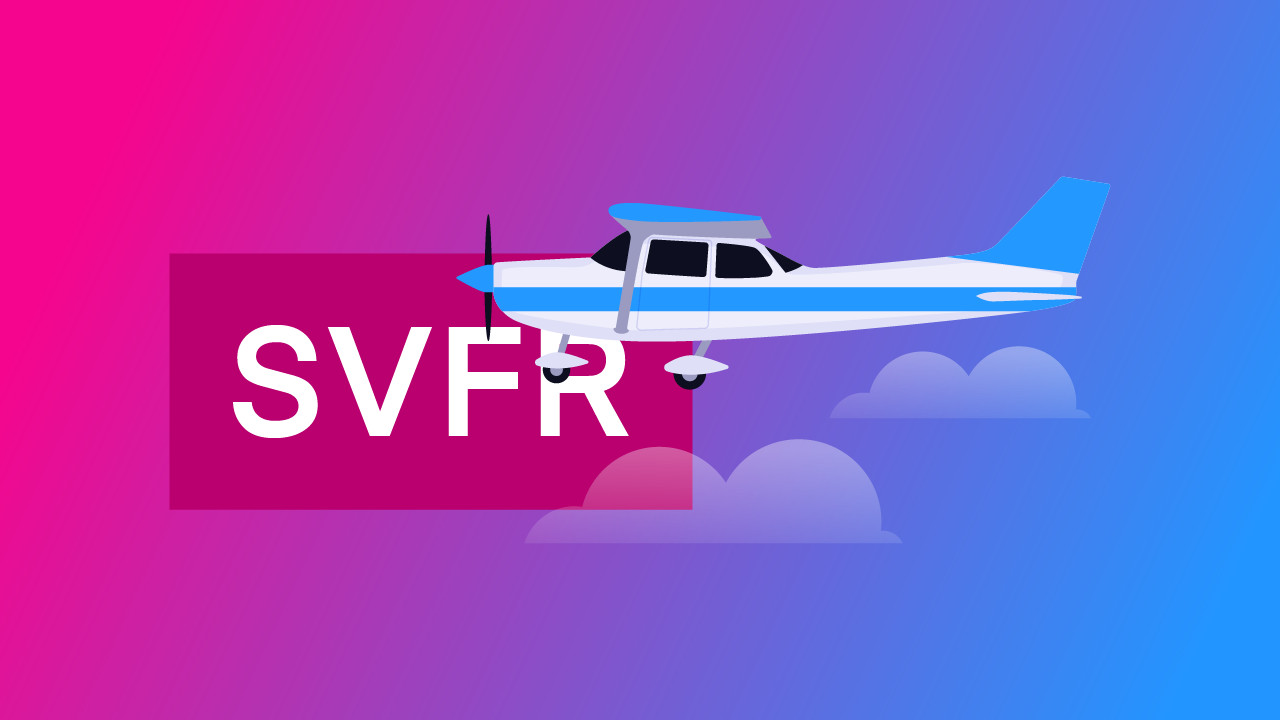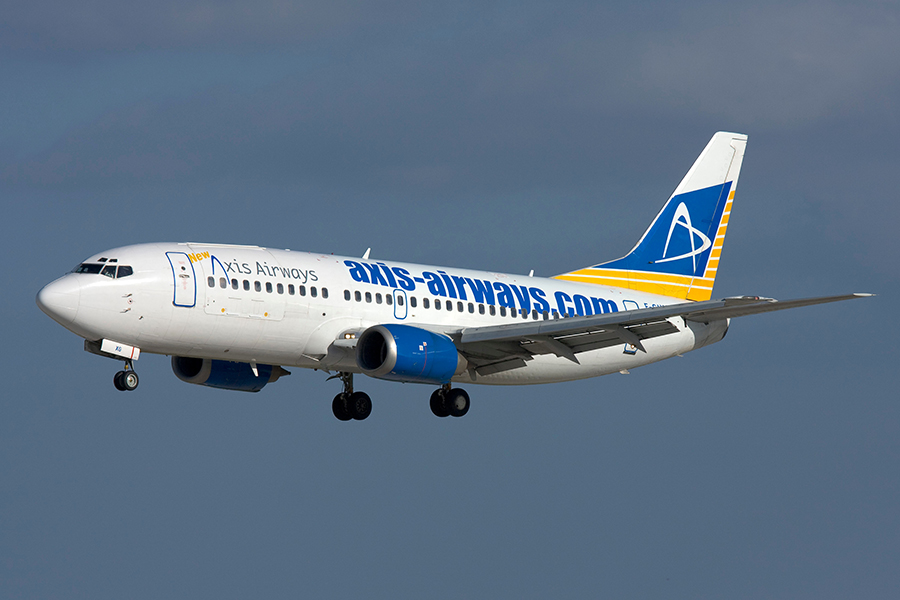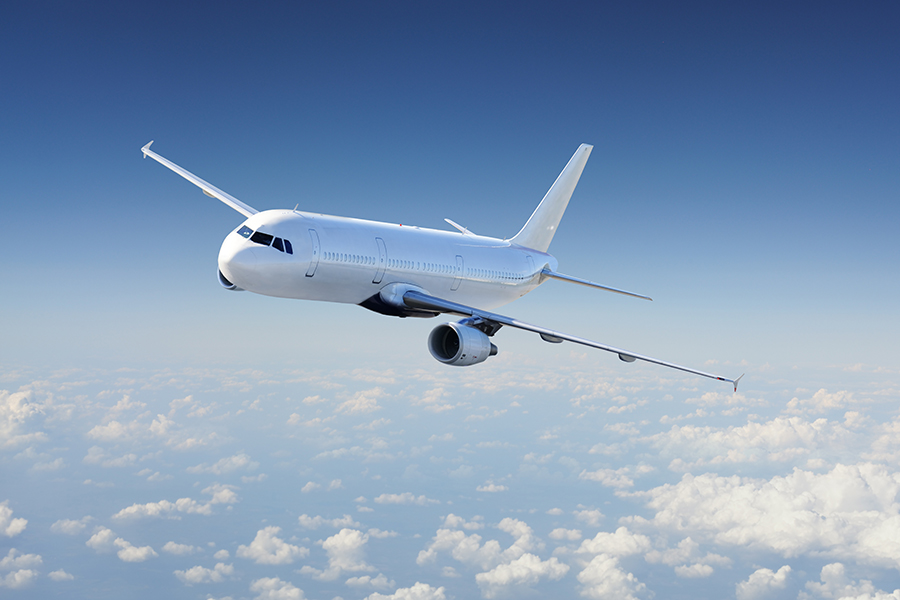Special VFR is a clearance issued by Air Traffic Control (ATC) that allows pilots to operate in weather conditions below the standard VFR minimums.
A special VFR clearance can get you out of a tight spot weather-wise, but it is important to understand why this type of clearance exists when you may and may not take advantage of it, and whether it is even a good idea in the first place.
Let’s take a look at special VFR clearances in detail so that you can make an informed decision about using them in the future.
Key Takeaways
- Special VFR allows flights in controlled airspace with 1 SM visibility and clear of clouds.
- Student pilots cannot request Special VFR clearances.
- Night Special VFR requires an instrument rating and IFR-capable aircraft.
- Special VFR should only be used with careful risk management and pilot discretion.
What Is Special VFR?
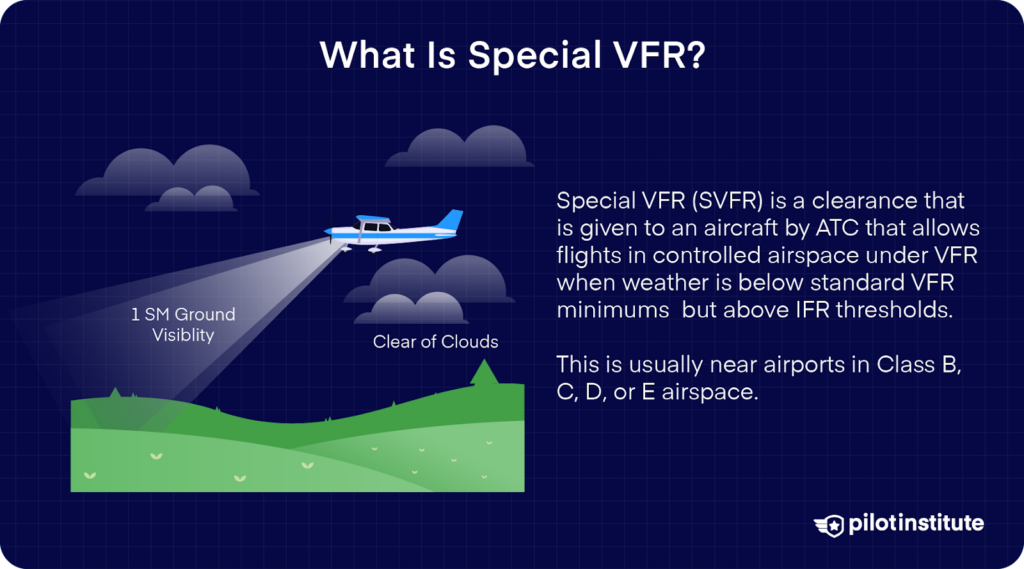
Special VFR (SVFR) is a clearance that is given to an aircraft by ATC that allows flights in controlled airspace under VFR when weather is below standard VFR minimums but above IFR thresholds.
This is usually near airports in Class B, C, D, or E airspace.
Special VFR Requirements
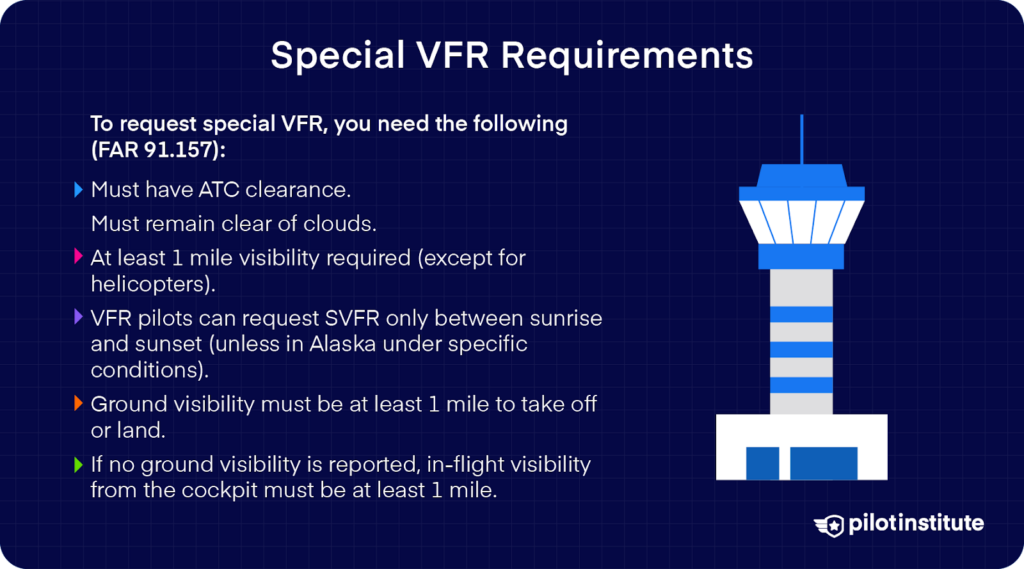
To understand special VFR (also known as SVFR) requirements, you need to understand the normal VFR weather requirements found in FAR 91.155 (c):
“Except as provided in FAR 91.157, no person may operate an aircraft beneath the ceiling under VFR within the lateral boundaries of controlled airspace designated to the surface for an airport when the ceiling is less than 1,000 feet.”
This means that you need a minimum cloud ceiling of 1,000ft when operating at airports with Class B, C, D, or E airspace. If the cloud ceiling is less than 1,000ft, you’re going to need an IFR clearance or a special VFR clearance.
You can only conduct special VFR operations in controlled airspace below 10,000 MSL at an airport that has airspace extending down to the surface.
Many Class C and B airports (listed in FAR 91) don’t accommodate Special VFR clearances for IFR traffic separation reasons.
Special VFR Minimums
To request special VFR, you need the following (FAR 91.157):
- 1 SM visibility
- Stay clear of clouds
That’s not a whole lot of restriction, and requesting special VFR is very much a judgment call from the Pilot in Command (PIC).
Although it is never recommended to use SVFR to scud run or push forward into poor weather, if you find yourself caught in rapidly changing conditions or under a localized cloud layer at the airport, SVFR may be your best option for landing safely.
Do You Need an Instrument Rating for Special VFR?

You do not need an instrument rating to request a special VFR from sunrise to sunset.
There are additional requirements for requesting special VFR at night:
- You must be qualified for instrument flight, as per FAR 61
- The aircraft must be equipped and capable of instrument flight
At that point, it may just be easier (and, perhaps, safer) to request an IFR clearance and execute an approach. Once again, the judgment call will be yours as the Pilot in Command.
How to Request a Special VFR (SVFR) Clearance
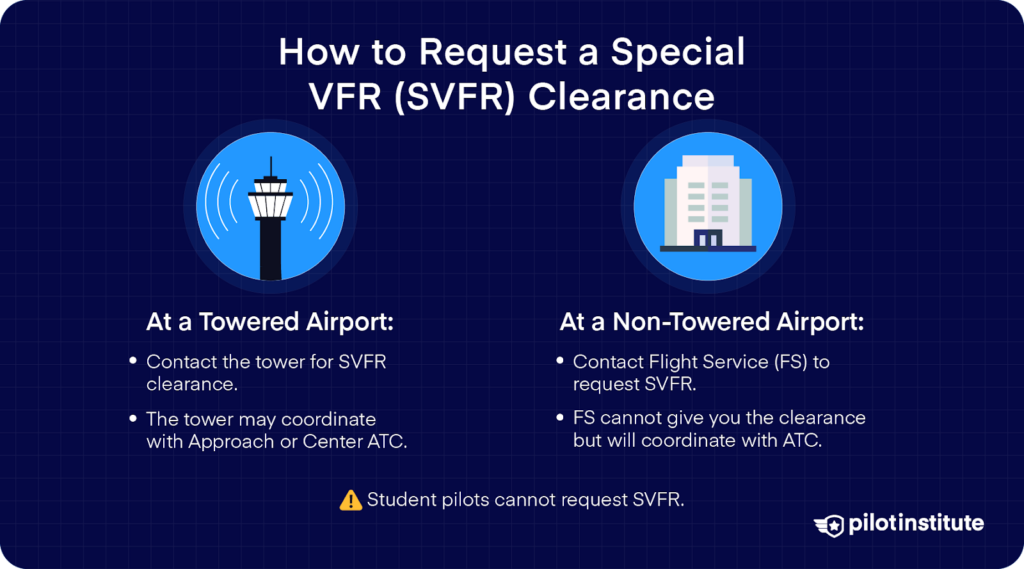
Requesting a special VFR clearance is relatively simple. If your destination is an airport with a control tower, the best place to start is by contacting that tower. In certain cases, they will need to communicate with an approach facility, but they should be able to issue you a special VFR clearance.
If you want to fly into a non-towered airport, contact Flight Service. Although Flight Service cannot give you an SVFR clearance, they will be able to work with the Air Traffic Control facility that oversees the airspace where you’re going.
If you’re a VFR pilot, Flight Service frequencies are marked on VFR charts, making them an ideal place to start. In contrast, center and approach control frequencies aren’t as easily accessible since you might have to look for them in an approach chart.
When contacting ATC, use the phraseology “request Special VFR” when asking for clearance.
A common question asked is: can a student pilot request a special VFR?
The short answer is no. A student pilot cannot request a Special VFR (SVFR) clearance. The FAA says that student pilots are prohibited from acting as pilots-in-command (PIC) in conditions that require SVFR.
The Risks of Special VFR
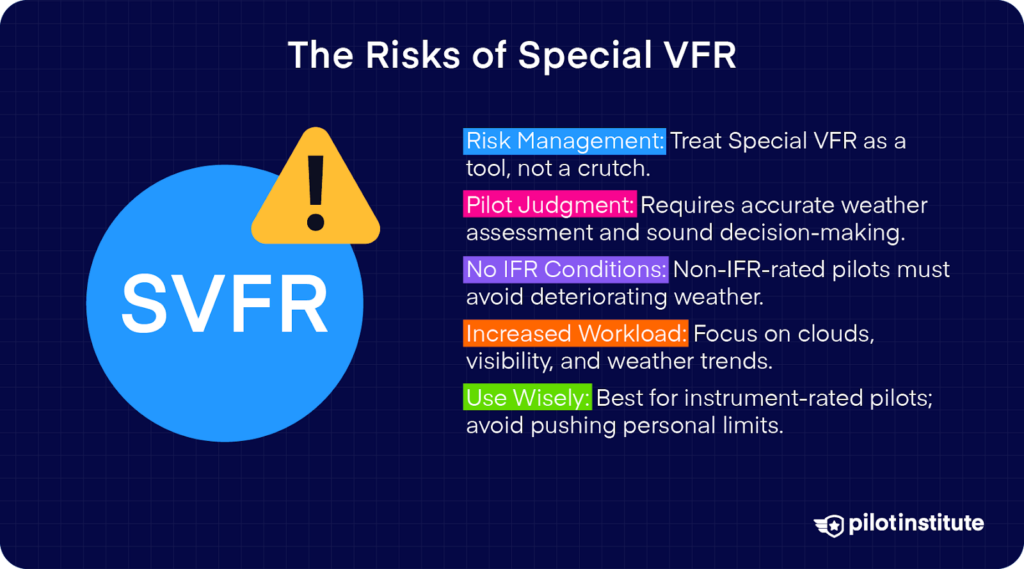
Using special VFR clearances requires an increase in risk management, and it should only be used as a tool, not a crutch.
First and foremost, operating in special VFR conditions requires a high level of pilot judgment and decision-making. You need to be able to accurately assess the weather conditions and make a well-informed decision about whether or not to proceed.
In addition, you cannot enter Instrument Flight Rules (IFR) conditions while operating under a special VFR. If you are not IFR-rated, you need to be extra cautious about using a special VFR clearance, as you will not have the option of switching to IFR if the weather deteriorates.
Finally, using special VFR also increases your workload. You’ll need to be constantly vigilant of clouds and visibility and keep track of the weather trends. There’s also an increased chance of getting lost or disoriented in weather below VFR minimums, which can quickly lead to disaster.
All things considered, special VFR can be a useful tool, particularly if you have an instrument rating, but it must not be used as a crutch to push your personal limits.
Conclusion
Special VFR is a great way for pilots to get around bad weather, but it needs to be used wisely. Pilots need to be aware of the risks involved in using special VFR and make well-informed decisions about whether or not to proceed. In addition, they must always keep track of weather trends and be vigilant of clouds and visibility.
Using special VFR can help pilots safely navigate through bad weather, but it’s important to remember that safety should always come first. Stick to your personal limits, and only use special VFR when you feel comfortable doing so.
